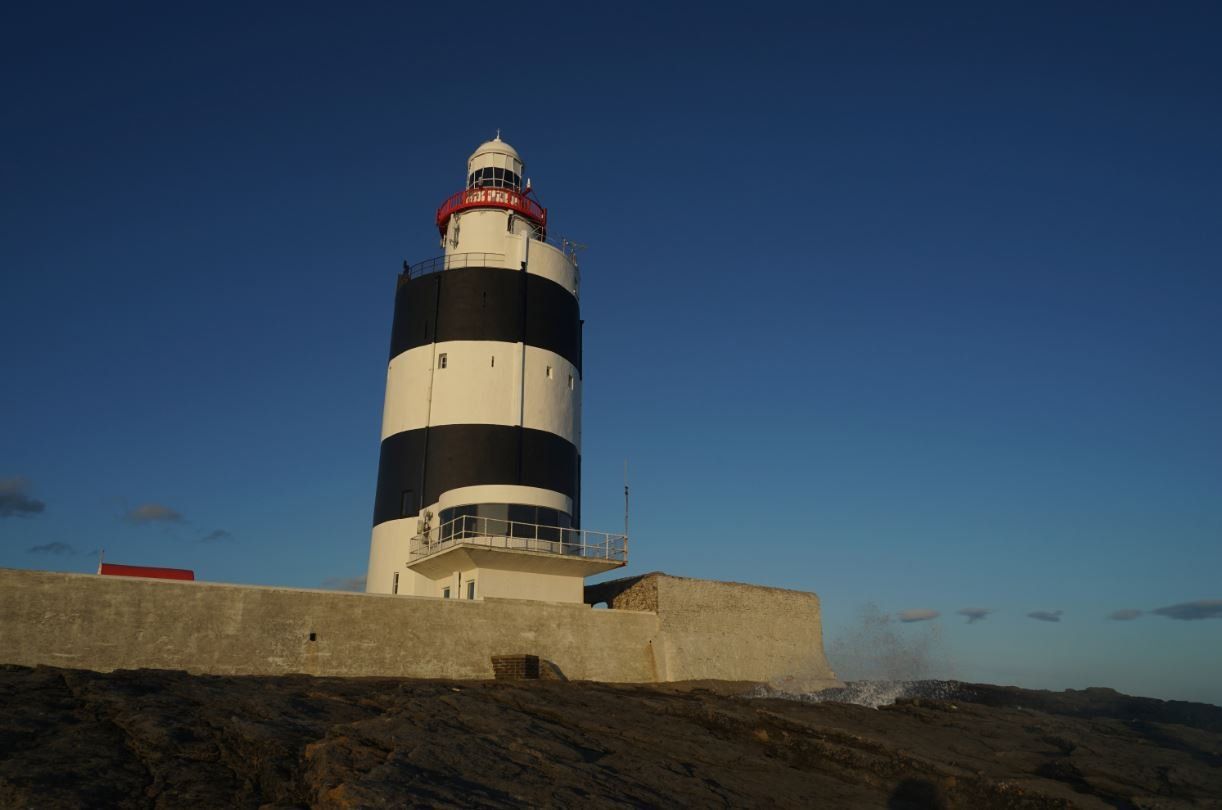1247 - the partition of Leinster
Not long before William Marshal’s death, the bishop of Ferns successfully petitioned Pope Innocent III to have him excommunicated on the grounds that he had confiscated church owned lands at Ferns, Co. Wexford. The bishop in question was Ailbe Ua Máel Muaid (Aulbin O’Mulloy), the former abbot of Baltinglass Abbey, Co. Wicklow. According to legend, after William Marshal’s death in May 1219, the bishop secured an audience with Henry III, who promised to seek that the lands be returned to Ferns diocese by Marshal’s heirs. As a gesture, the Wexford bishop was to visit the tomb of William Marshal and rescind the excommunication. Instead, when the bishop stood before the effigy of Marshal in London, he threatened to extend the excommunication to his sons if the lands at Ferns were not returned. The Marshal sons were enraged and refused. In retaliation, the bishop prophesized the extinction of the male line of William Marshal.
William Marshal was succeeded by his eldest son, also William, and to distinguish him from his father he is generally known as William Marshall the younger. Like his father, he was well-connected, and in April 1224 he married Eleanor, daughter of the late king John, and sister of the present king Henry III. William Marshal the younger was soon despatched to Ireland, where trouble had once again erupted at the hands of Hugh and Walter de Lacy. Despite king John’s campaign in Ireland in 1210 against the de Lacy brothers, the king restored the lordship of Meath to Walter de Lacy in 1215. However, Walter’s brother Hugh was not restored his lands in Ulster so swiftly, and he began to grow impatient. In 1224, while Walter de Lacy was on royal service in England, his brother Hugh returned to Ireland without the consent of the king. He formed an alliance with Áed Ua Néill, king of Tír Eógain in west Ulster and began to retake his lands in east Ulster by force. Henry III sent William Marshal the younger to subdue the Hugh de Lacy’s most recent rebellion in Ulster, which was beginning to move south into Meath. Less than a month after his wedding to Eleanor, William Marshal the younger was appointed justiciar of Ireland. He arrived to take up his new position shortly later, and by July that year, Marshal was at Trim Castle. In his company was Walter de Lacy who appears to have been asked to prove his loyalty to the king by taking a stand against his brother. Together, William and Walter retook the castle of Trim, but only after a seven-week siege. Another party was sent north to relieve the crown forces at Carrickfergus Castle, which had been in royal hands since 1210 and was now, in an ironic twist, being besieged by Hugh de Lacy with a fleet of ships. With the arrival of the royal forces to break the siege, Hugh de Lacy surrendered and was sent to England to answer to the king.
William Marshal the younger spent quite a lot of time in Ireland, continuing his father’s work in the development of the Lordship of Leinster. In 1225 he founded the Dominican Priory in Kilkenny. He died in 1231, without a male heir and it appeared that the prophesy of the old bishop of Ferns might come true. However, William still had four younger brothers, and the Lordship of Leinster passed to the next in line, his brother Richard, whose association with Ireland would be short-lived and tragic. In 1233 he became embroiled in a bitter dispute with Henry III. Initially, Richard successfully defended his lands in Wales. In February 1234 he landed in Ireland, gathered an army of his vassals and began to take back his Irish castles and lands. On 1st April he met a number of the Irish barons at the Curragh, Co. Kildare. These included the king’s justiciar, Maurice fitzGerald as well as Hugh de Lacy and Richard de Burgh. However, he was unable to convince the men who now greeted him to join his cause. A confrontation ensued, and Richard Marshal was wounded. He was rushed to Kilkenny, where he subsequently died on April 15th at the castle built by his father, and was buried at Dominican Priory founded by his older brother. Nearby, a new site was being laid out for the construction of a Franciscan Friary, which Richard had founded shortly before his death.
After the murder of Richard in 1234, the Lordship of Leinster passed to his brothers, Gilbert (d. 1241), Walter (d. November 1245) and Anselm (d. December 1245). Incredibly, each of William Marshal’s sons had died childless, in fulfillment of the prophesy made by the bishop of Ferns many years earlier. Therefore, the Lordship of Leinster was to be divided among the five daughters of William Marshal the elder. As such, the Lordship ceased to exist. All of William Marshal’s daughters had married, and unlike their brothers, they had many children. In May 1247, a year and a half after the death of the last of William Marshal’s sons, an agreement was reached to divide the former Lordship of Leinster among his daughters. Ultimately, the lands of Leinster would be divided among their children and grandchildren, and became even further fragmented.
A similar process of fragmentation, though slightly less dramatic, was already under way in the Lordship of Meath. Walter de Lacy did have children, but both his only son and grandson had died before him. Therefore, when Walter died in 1241, the Meath lordship passed to his granddaughters, Maud and Margery. Three years later the process of dividing the Lordship of Meath among his granddaughters officially began. In effect, the old Lordship of Meath was divided into east and west, similar to the modern counties of Meath and Westmeath. Western Meath passed to Margery de Lacy, who married Sir John de Verdun. Trim would form the caput of the eastern half of the Lordship that in 1252 passed to Maud de Lacy and her husband, Geoffrey de Geneville, who took his name from Joinville in the Champagne region of northern France.
By 1250 the old Lordships of Leinster and Meath ceased to exist, though their new subdivisions would continue to function as minor lordships. This was not simply a dismantling of two relatively short-lived Anglo-Norman regional lordships. These had developed as independent and powerful kingdoms long before the arrival of the Anglo-Normans. For the initial years of the conquest it had suited the English crown to retain these ancient political territories. Now the modernisation of the administration of the English colony in Ireland required a new form of land ownership and legal management that was very gradually beginning to look more like the shire system in England; the origin of the modern counties of Ireland. However, the county map of Ireland that we know today would take centuries to evolve, and in the Gaelic areas of west Connaught, west Munster and west Ulster, the English system of administration and law did not apply. For many years to come, the ancient forms of land ownership and inheritance continued in these areas as before.


